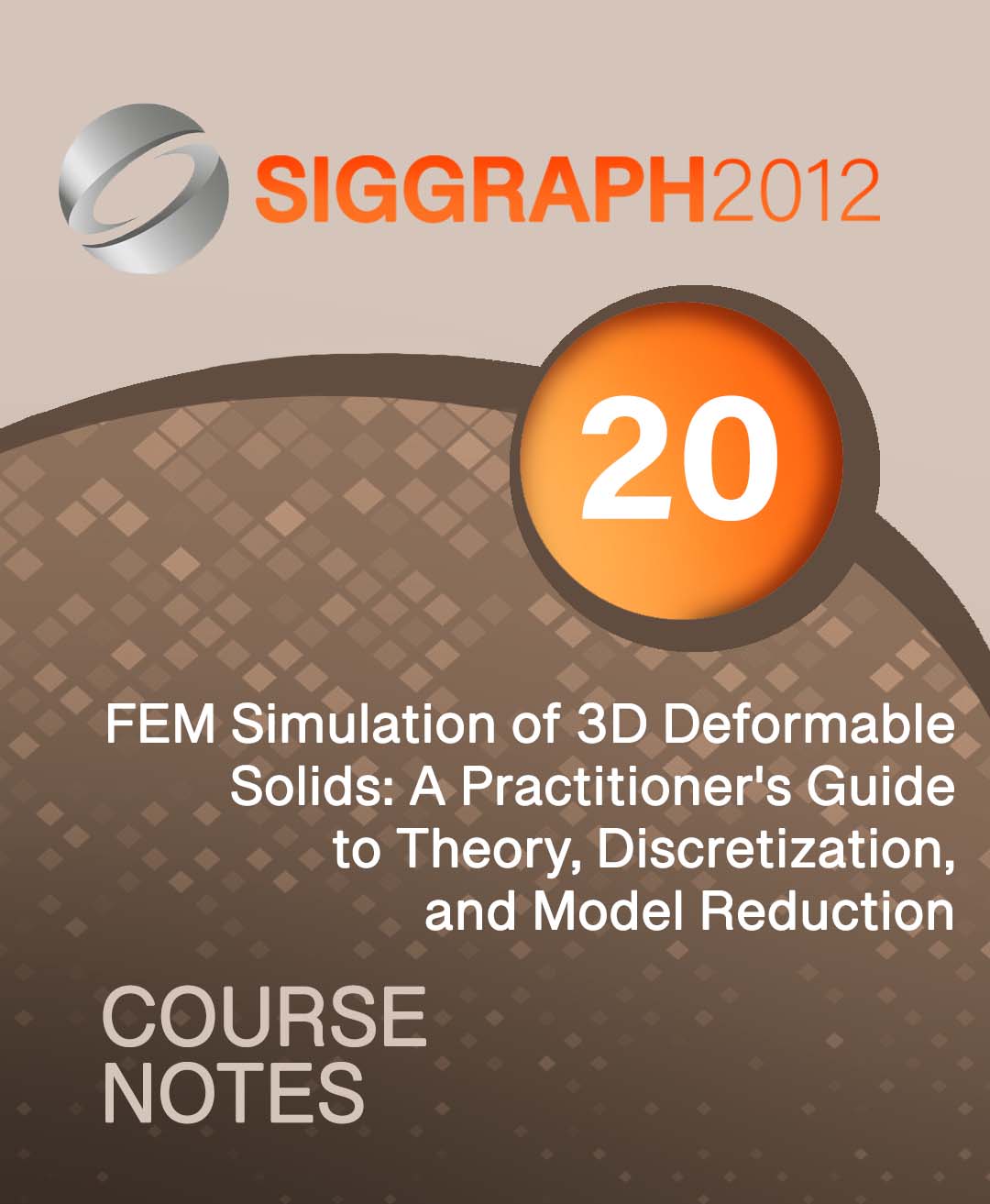“FEM Simulation of 3D Deformable Solids: A Practitioner’s Guide to Theory, Discretization, and Model Reduction” by Sifakis
Conference:
Type(s):
Title:
- FEM Simulation of 3D Deformable Solids: A Practitioner's Guide to Theory, Discretization, and Model Reduction
Organizer(s):
Presenter(s)/Author(s):
Entry Number: 20
Abstract:
- Familiarity with functions of several variables, partial derivaties, volume and surface integrals.
- Some exposure to numerical techniques for solving linear systems of equations, and the Newton-Raphson method for finding approximate solutions to nonlinear problems.
- A good understanding of linear algebra, including concepts such as vectors, matrices and (higher-order) tensors. Familiarity with determinants, eigen- value problems and the Singular Value Decomposition is also assumed.
- Although many of the proofs and derivations are treated as optional reading, the majority of them make heavy use of differentials (linearized tensors) and reference complex differentiation concepts (such as the derivative of a matrix function with respect to a matrix argument).
Description
Simulation of deformable elastic solids has evolved into a popular tool for visual effects, games and interactive virtual environments. The Finite Element Method has been very popular in this context, especially in applications that can benefit from its versatility in representing elastic bodies with intricate geometric features and diverse material properties. Techniques for solids simulation that have been broadly used in graphics draw upon a rich, decades-long literature in Galerkin methods, discrete elliptic PDEs and continuum mechanics theory. As many of these techniques originated in theoretical and engineering disciplines other than graphics and visual computing, it may be somewhat challenging for a practitioner with modest theoretical exposure or familiarity with these fields to navigate some of the most established mechanical engineering or computational physics reference textbooks, especially if their goal is to acquire a high-level understanding of the basic tools needed for implementing a simulation system. This document aims to provide a concise, yet lightweight synopsis of the relevant theory, with adequate attention to implementation details from the perspective of a graphics developer. Most of the material referenced in these notes resulted from the author’s long and rewarding interactions with graduate students at Stanford, UCLA and UW-Madison, as well as the experience of the graduate class “Introduction to physics-based modeling and simulation” offered at the University of Wisconsin. This document assumes minimal to no exposure to continuum mechanics or finite element discretizations. However, a particular flavor of calculus background is presumed, including:





